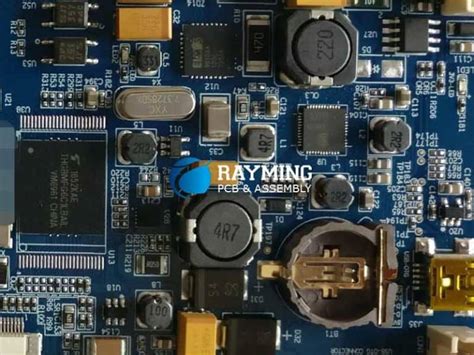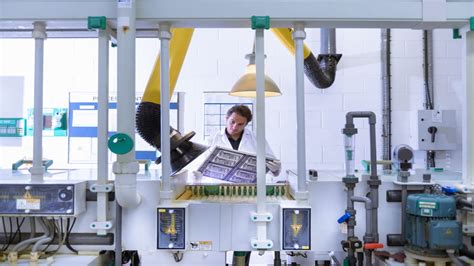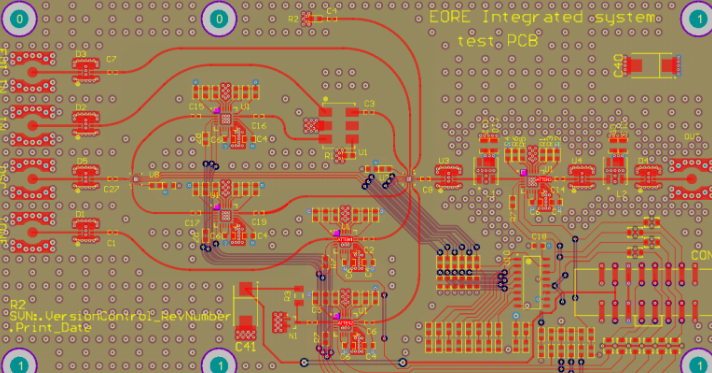Rf-35 pcb
Designing Efficient RF-35 PCB Layouts for High-Frequency Applications
Designing efficient RF-35 PCB layouts for high-frequency applications requires a meticulous approach to ensure optimal performance and reliability. RF-35, a high-frequency laminate material, is widely used in the fabrication of printed circuit boards (PCBs) for applications such as telecommunications, radar systems, and satellite communications.
The unique properties of RF-35, including its low dielectric constant and low loss tangent, make it an ideal choice for high-frequency circuits. However, leveraging these properties necessitates careful consideration of various design aspects.
To begin with, understanding the electrical characteristics of RF-35 is crucial.
The material’s low dielectric constant minimizes signal delay, while its low loss tangent reduces signal attenuation. These attributes are essential for maintaining signal integrity at high frequencies. Consequently, designers must ensure that the PCB layout minimizes any potential disruptions to these properties. One effective strategy is to maintain consistent trace widths and spacing, which helps to control impedance and reduce signal reflections.
Moreover, the placement of components on the RF-35 PCB plays a significant role in the overall performance of the circuit.
High-frequency components should be positioned as close to each other as possible to minimize the length of signal paths. This reduces the potential for signal degradation and electromagnetic interference (EMI). Additionally, grounding is a critical aspect of RF-35 PCB design. A well-designed ground plane can significantly enhance signal integrity by providing a low-impedance return path for high-frequency signals. It is advisable to use a continuous ground plane and avoid any unnecessary splits or gaps that could disrupt the return path.
Transitioning to the topic of signal routing, it is imperative to follow best practices to ensure efficient signal transmission.
Microstrip and stripline configurations are commonly used in RF-35 PCB designs. Microstrip lines, which are traces on the outer layers of the PCB, are suitable for applications where minimal signal loss is required. On the other hand, stripline configurations, where traces are sandwiched between two ground planes, offer better shielding and are ideal for reducing EMI. The choice between microstrip and stripline depends on the specific requirements of the application.
Thermal management is another critical consideration in RF-35 PCB design.
High-frequency circuits often generate significant amounts of heat, which can adversely affect performance and reliability. Effective thermal management strategies include the use of thermal vias, heat sinks, and proper component placement to dissipate heat efficiently. Ensuring adequate ventilation and using materials with good thermal conductivity can further enhance thermal performance.
Furthermore, the manufacturing process of RF-35 PCBs demands precision and attention to detail.
The material’s properties require specific handling and processing techniques to avoid defects and ensure consistent quality. For instance, the lamination process must be carefully controlled to prevent voids and delamination. Additionally, the etching process should be optimized to achieve precise trace dimensions and maintain the integrity of the high-frequency signals.
In conclusion, designing efficient RF-35 PCB layouts for high-frequency applications involves a comprehensive understanding of the material’s properties and meticulous attention to design details. By considering factors such as component placement, signal routing, grounding, and thermal management, designers can optimize the performance and reliability of high-frequency circuits. The careful execution of these design principles ensures that the advantages of RF-35 are fully realized, resulting in superior performance in demanding high-frequency applications.
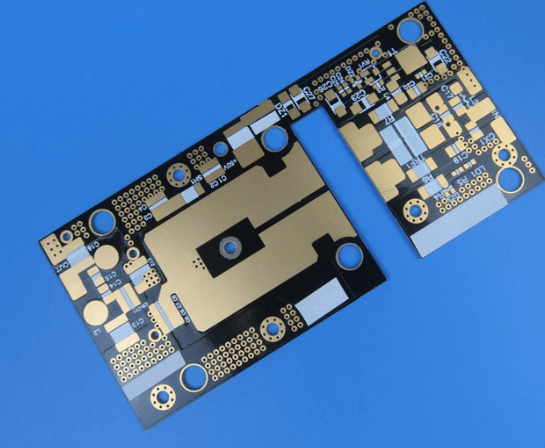
Material Properties and Benefits of Using RF-35 in PCB Manufacturing
RF-35 is a high-performance material widely used in the manufacturing of printed circuit boards (PCBs), particularly in applications requiring superior electrical properties and thermal stability. This material is a type of laminate that combines the benefits of low dielectric constant and low dissipation factor, making it an ideal choice for high-frequency and high-speed digital applications. Understanding the material properties and benefits of using RF-35 in PCB manufacturing is crucial for engineers and designers aiming to optimize the performance and reliability of their electronic devices.
One of the primary material properties of RF-35 is its low dielectric constant, typically around 3.5.
This characteristic is essential for maintaining signal integrity in high-frequency applications, as it minimizes signal loss and ensures efficient transmission of electrical signals. Additionally, the low dielectric constant helps in reducing the propagation delay, which is critical for high-speed digital circuits. The material’s low dissipation factor, usually less than 0.003, further enhances its suitability for high-frequency applications by minimizing energy loss in the form of heat, thereby improving the overall efficiency of the PCB.
Moreover, RF-35 exhibits excellent thermal stability, which is a significant advantage in environments where temperature fluctuations are common.
The material’s coefficient of thermal expansion (CTE) is closely matched to that of copper, the primary conductive material used in PCBs. This matching reduces the risk of delamination and mechanical stress during thermal cycling, thereby enhancing the durability and longevity of the PCB. Furthermore, RF-35’s high glass transition temperature (Tg) ensures that the material remains stable and retains its mechanical properties even at elevated temperatures, making it suitable for applications that involve high power and heat dissipation.
In addition to its electrical and thermal properties, RF-35 offers excellent mechanical strength and dimensional stability.
These attributes are particularly important during the manufacturing process, where the material must withstand various mechanical stresses such as drilling, cutting, and etching. The robust nature of RF-35 ensures that the PCB maintains its structural integrity throughout the manufacturing process, resulting in a high-quality end product. Additionally, the material’s dimensional stability ensures precise and consistent alignment of the conductive layers, which is crucial for maintaining the accuracy and performance of the PCB.
The benefits of using RF-35 in PCB manufacturing extend beyond its material properties.
The material’s compatibility with standard PCB fabrication processes makes it a cost-effective choice for manufacturers. RF-35 can be processed using conventional techniques such as lamination, drilling, and plating, which reduces the need for specialized equipment and processes. This compatibility not only lowers production costs but also shortens lead times, enabling faster time-to-market for electronic products.
Furthermore, RF-35’s excellent moisture resistance enhances the reliability of PCBs in humid and harsh environments. The material’s low water absorption rate ensures that its electrical properties remain stable even in the presence of moisture, thereby preventing issues such as signal degradation and corrosion. This characteristic makes RF-35 an ideal choice for applications in telecommunications, aerospace, and automotive industries, where environmental conditions can be challenging.
In conclusion, the material properties and benefits of using RF-35 in PCB manufacturing make it a preferred choice for high-frequency and high-speed digital applications.
Its low dielectric constant, low dissipation factor, excellent thermal stability, mechanical strength, and compatibility with standard fabrication processes contribute to the production of reliable and high-performance PCBs. As technology continues to advance, the demand for materials like RF-35 that can meet the stringent requirements of modern electronic devices is expected to grow, further solidifying its importance in the PCB manufacturing industry.
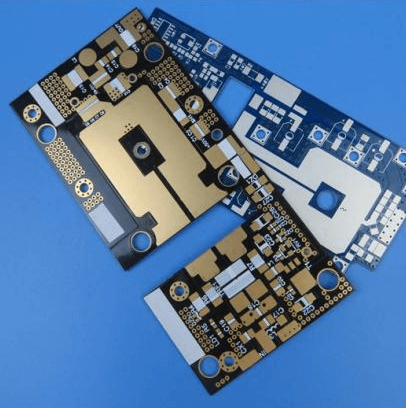
Challenges and Solutions in RF-35 PCB Prototyping
Prototyping RF-35 PCBs presents a unique set of challenges that require specialized solutions to ensure optimal performance and reliability. RF-35, a high-frequency laminate material, is widely used in the design and fabrication of printed circuit boards (PCBs) for radio frequency (RF) applications. The inherent properties of RF-35, such as its low dielectric constant and low loss tangent, make it an ideal choice for high-frequency circuits. However, these same properties also introduce complexities in the prototyping process.
One of the primary challenges in RF-35 PCB prototyping is maintaining signal integrity.
High-frequency signals are particularly susceptible to losses and interference, which can degrade the performance of the circuit. To address this, careful attention must be paid to the layout and design of the PCB. This includes minimizing the length of signal traces, using proper grounding techniques, and ensuring adequate spacing between traces to prevent crosstalk. Additionally, the use of high-quality connectors and components that are compatible with RF-35 material is crucial to maintaining signal integrity.
Another significant challenge is the thermal management of RF-35 PCBs.
High-frequency circuits often generate substantial amounts of heat, which can affect the performance and longevity of the PCB. Effective thermal management solutions, such as the use of thermal vias, heat sinks, and proper ventilation, are essential to dissipate heat and maintain the stability of the circuit. Moreover, selecting components with appropriate thermal ratings and ensuring proper placement on the PCB can further enhance thermal performance.
The manufacturing process of RF-35 PCBs also poses challenges due to the material’s unique properties.
RF-35 laminates are more sensitive to mechanical stress and chemical exposure compared to standard FR-4 materials. This necessitates the use of specialized fabrication techniques and equipment. For instance, the drilling process must be carefully controlled to prevent delamination and ensure precise hole dimensions. Additionally, the etching process must be optimized to achieve accurate trace widths and spacing, which are critical for high-frequency performance.
To overcome these manufacturing challenges, collaboration with experienced PCB fabricators who have expertise in working with RF-35 material is essential.
These fabricators can provide valuable insights and recommendations on design for manufacturability (DFM) considerations, helping to streamline the prototyping process and reduce the risk of defects. Furthermore, leveraging advanced simulation and modeling tools can aid in predicting the behavior of the PCB under various conditions, allowing for more informed design decisions.
Testing and validation of RF-35 PCBs also require specialized approaches.
Standard testing methods may not be sufficient to accurately assess the performance of high-frequency circuits. Therefore, the use of advanced testing equipment, such as network analyzers and spectrum analyzers, is necessary to measure parameters like return loss, insertion loss, and impedance. Additionally, conducting thorough environmental testing, including thermal cycling and humidity exposure, can help identify potential reliability issues and ensure the robustness of the PCB.
In conclusion, while prototyping RF-35 PCBs presents several challenges, these can be effectively addressed through meticulous design practices, advanced manufacturing techniques, and rigorous testing protocols. By understanding the unique properties of RF-35 material and leveraging the expertise of experienced fabricators and engineers, it is possible to develop high-performance RF circuits that meet the demanding requirements of modern applications. As technology continues to advance, ongoing research and development in materials and processes will further enhance the capabilities and reliability of RF-35 PCBs, paving the way for innovative solutions in the field of high-frequency electronics.
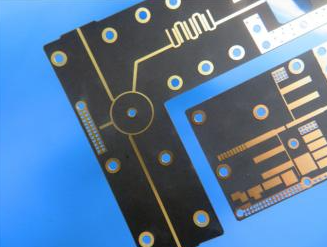
Comparing RF-35 PCB Performance with Other High-Frequency Substrates
When evaluating the performance of RF-35 PCBs in comparison to other high-frequency substrates, it is essential to consider several critical factors that influence the overall efficiency and reliability of electronic circuits. RF-35, a high-frequency laminate material, is renowned for its excellent electrical properties, making it a popular choice in the design and manufacture of RF and microwave circuits. However, to fully appreciate its capabilities, one must juxtapose it with other commonly used substrates such as FR-4, Rogers, and PTFE-based materials.
Firstly, the dielectric constant (Dk) is a pivotal parameter in high-frequency applications.
RF-35 boasts a stable dielectric constant, typically around 3.5, which ensures minimal signal distortion and consistent performance across a wide frequency range. In contrast, FR-4, a widely used substrate in general PCB applications, has a higher and less stable dielectric constant, usually around 4.5. This variability can lead to signal integrity issues, especially at higher frequencies, making FR-4 less suitable for RF applications. On the other hand, Rogers materials, such as RO4003C, offer a dielectric constant similar to RF-35 but with even tighter tolerance, providing exceptional performance in precision applications.
Another critical aspect to consider is the dissipation factor (Df), which measures the dielectric losses within the substrate material.
RF-35 exhibits a low dissipation factor, typically around 0.0018 at 10 GHz, indicating minimal energy loss and efficient signal transmission. This low Df is comparable to that of Rogers materials, which also feature low dissipation factors, making both materials ideal for high-frequency applications where signal integrity is paramount. Conversely, FR-4 has a significantly higher dissipation factor, often exceeding 0.02 at high frequencies, leading to greater signal attenuation and reduced performance in RF circuits.
Thermal management is another area where RF-35 demonstrates superior performance.
With a high thermal conductivity, RF-35 effectively dissipates heat generated during operation, thereby enhancing the reliability and longevity of the PCB. This characteristic is particularly advantageous in high-power applications where thermal buildup can be detrimental. While PTFE-based materials also offer excellent thermal properties, they are often more challenging to process and can be cost-prohibitive. In comparison, FR-4 has lower thermal conductivity, which can result in overheating issues in high-frequency applications.
Mechanical stability and ease of fabrication are additional factors that influence the choice of substrate material.
RF-35 provides a good balance of mechanical strength and flexibility, facilitating easier handling and processing during PCB manufacturing. Its compatibility with standard PCB fabrication techniques further adds to its appeal. Rogers materials, while offering excellent electrical properties, can sometimes be more brittle and challenging to work with. PTFE-based substrates, known for their outstanding electrical performance, often require specialized fabrication processes, increasing the complexity and cost of production. FR-4, being the most commonly used substrate, is well-understood and easy to fabricate but falls short in high-frequency performance.
In conclusion, RF-35 PCBs offer a compelling combination of stable dielectric properties, low dissipation factor, excellent thermal management, and ease of fabrication, making them a strong contender in high-frequency applications. While other substrates like Rogers and PTFE-based materials also provide exceptional performance, they often come with higher costs and fabrication challenges. FR-4, although cost-effective and easy to work with, does not meet the stringent requirements of high-frequency circuits. Therefore, when comparing RF-35 with other high-frequency substrates, it becomes evident that RF-35 strikes an optimal balance, delivering reliable and efficient performance in demanding RF and microwave applications.

